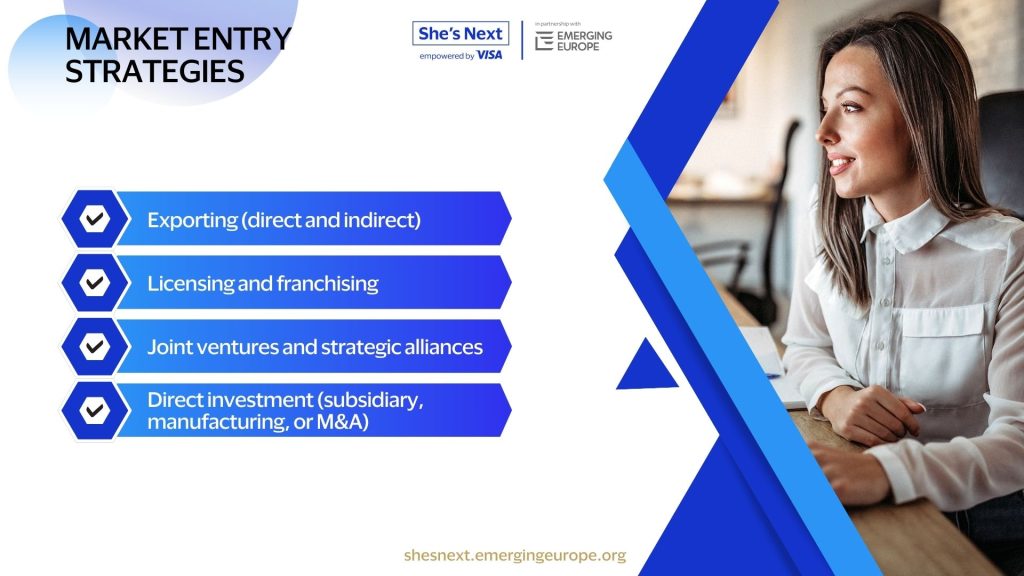
Choosing the right market entry strategy for your business
Once you’ve assessed your business readiness and researched potential markets, the next big question is: How should you enter?
There’s no one-size-fits-all answer. Your decision should reflect your goals, budget, risk tolerance, and the level of control you want in your new market. Whether you’re a Moldovan fashion brand eyeing Western Europe or a Kyrgyz software firm exploring Southeast Asia, your entry strategy sets the tone for your entire expansion.
This article breaks down the most common entry strategies—and how to choose the best fit for your business.
Understand the different market entry strategies
Exporting (direct and indirect)
Best for: Businesses starting out with limited investment and lower risk
Pros: Cost-effective, relatively quick to implement, no need for local offices.
Cons: Less control over logistics, customer experience, and brand positioning.
Example: A Georgian organic tea producer exports directly to Poland using an e-commerce distributor. They avoid setup costs but rely heavily on third-party partners for delivery and packaging.
Licensing and franchising
Best for: Businesses with a strong brand, patented product, or tech solution
Pros: Scalable, generates passive income, spreads brand presence quickly.
Cons: You hand over operational control—risking inconsistent customer experiences.
Example: An Armenian edtech platform licensed its software to a Canadian language school, enabling fast market entry without setting up operations.
Joint ventures and strategic alliances
Best for: Companies that need local insights and regulatory navigation
Pros: Shared costs, local market knowledge, access to existing distribution networks.
Cons: Risk of misaligned expectations, decision-making delays, cultural misunderstandings.
Example: A Kazakh agri-tech start-up formed a joint venture with a South Korean distributor to navigate import regulations and gain instant credibility.
Direct investment (subsidiary, manufacturing, or M&A)
Best for: Businesses seeking full control and a permanent market presence
Pros: High autonomy, strong brand positioning, long-term scalability.
Cons: Cost-intensive, complex legal and tax compliance, greater exposure to risk.
Example: A Ukrainian IT firm established a wholly owned subsidiary in Germany to support EU clients, invest in local hiring, and manage data compliance directly.







